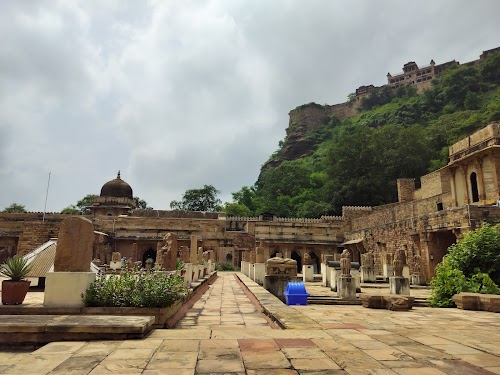
Gujari Mahal
Gwalior, India
- Admire the Shalabhanjika statue.
- Explore the museum's artifact collections.
- Learn about Raja Man Singh Tomar's love story.
- Photograph the palace's architecture.
Known for:
Description:
Gujari Mahal, now a state archaeological museum, is a must-visit for history buffs and art enthusiasts in Gwalior. Built in the 15th century by Raja Man Singh Tomar for his beloved queen Mrignayani, this palace showcases a blend of Rajput and Mughal architectural styles. The museum houses a remarkable collection of sculptures, artifacts, and relics, offering a glimpse into the rich history and cultural heritage of the region. Marvel at the intricate carvings, ancient pottery, and exquisite statues, including the famous Shalabhanjika statue, a masterpiece of Indian art. The palace's architecture, though partially in ruins, still exudes a sense of grandeur and romance, transporting you back to a bygone era. The serene atmosphere and historical significance make Gujari Mahal a captivating destination.
History:
Raja Man Singh Tomar built Gujari Mahal in the 15th century as a token of his love for his ninth queen, Mrignayani, a Gujjar princess. Legend says she agreed to marry him only if he built her a separate palace with its own water supply from the Rai River, as she refused to drink water from the fort due to her community traditions. The palace served as her residence and was designed to incorporate her preferences. Over the centuries, Gujari Mahal witnessed various historical events and rulers. Eventually, it fell into disrepair, but in the early 20th century, it was converted into an archaeological museum. This transformation helped preserve the palace and its historical significance, allowing visitors to appreciate the legacy of Raja Man Singh Tomar and his queen.